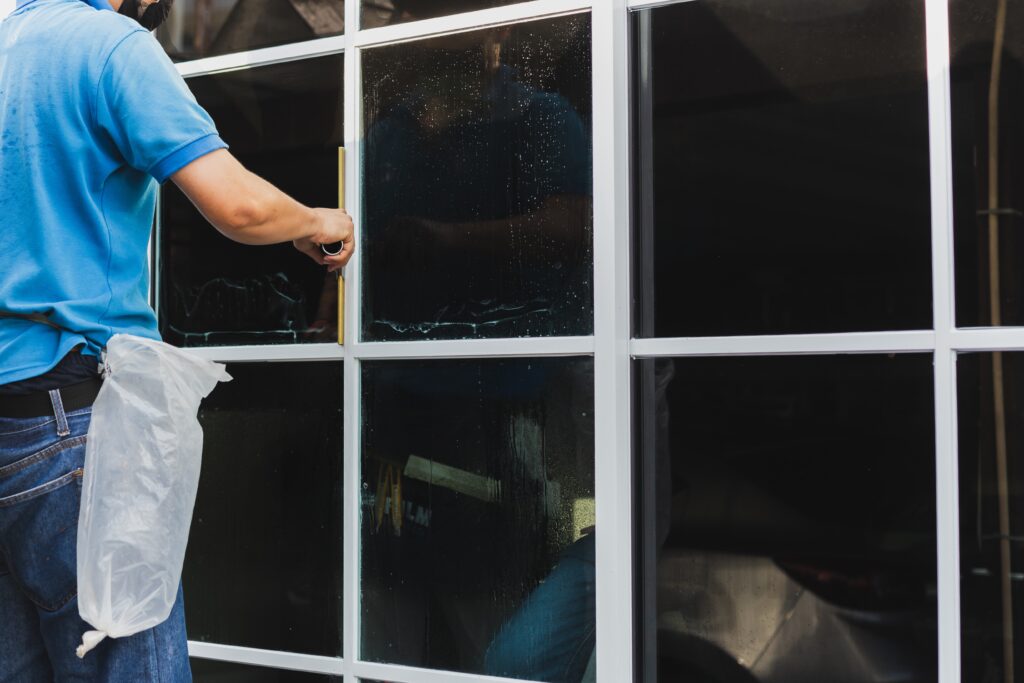Eco-Friendly Window Film Supplies: Sustainable Options from Chinese Manufacturers

As global awareness of environmental issues grows, industries worldwide are pivoting toward sustainable solutions to reduce carbon footprints and meet stringent environmental regulations. The window film industry, particularly in China, has emerged as a leader in this transition, offering innovative, eco-friendly products that align with global sustainability trends. Companies like Nanolink are at the forefront, producing window films made from recyclable polyethylene terephthalate (PET) and advanced nano-ceramic coatings that enhance energy efficiency while minimizing environmental impact. This article explores the rise of eco-friendly window film supplies from Chinese manufacturers, their alignment with sustainability goals, and their role in reducing carbon footprints.
The Rise of Eco-Friendly Window Films
Window films, once primarily valued for aesthetics and privacy, have evolved into critical components for energy efficiency and environmental sustainability. These thin, adhesive or static-cling films, typically made from PET or vinyl, are applied to glass surfaces in residential, commercial, and automotive settings. Modern advancements have introduced eco-friendly variants that prioritize recyclable materials, low volatile organic compound (VOC) emissions, and energy-saving properties. In 2025, the global window film market is projected to reach USD 3.14 billion, with a compound annual growth rate (CAGR) of 5.9% through 2034, driven by demand for sustainable solutions.

Chinese manufacturers, such as Nanolink, have capitalized on this trend by integrating sustainable practices into their production processes. Nanolink, a Shanghai-based company, operates a comprehensive industrial chain for PET and thermoplastic polyurethane (TPU) films, emphasizing eco-friendly materials and advanced technologies like nano-ceramic coatings. Their focus on sustainability aligns with global initiatives such as the EU’s Ecodesign for Sustainable Products Regulation (ESPR) and green building certifications like LEED, which prioritize energy efficiency and reduced environmental impact.
Read more: Maintaining Your UV-Blocking Patio Awning: Tips for Longevity
Recyclable PET: A Cornerstone of Sustainability
Polyethylene terephthalate (PET) is a versatile, durable polymer widely used in window films due to its clarity, strength, and recyclability. Unlike traditional vinyl films, which can contain harmful chemicals like PVC and are challenging to recycle, PET-based films offer a more sustainable alternative. Nanolink, for instance, produces PET window films with 100% recycled content, such as the ECO-2100ZC Recycled film by LINTEC, which is crafted from post-consumer PET materials in a clean-room environment. This reduces landfill waste and lowers the carbon footprint associated with raw material extraction and production.
Recyclable PET films contribute to a circular economy by enabling reuse at the end of their lifecycle. For example, Cosmo Films has developed mono-material BOPP and CPP films to replace multi-layer BOPET structures, simplifying recycling processes and reducing material consumption. These innovations address the challenge of conventional packaging, where multi-layer films are difficult to separate and recycle, often ending up in landfills. By adopting recyclable PET, Chinese manufacturers are not only meeting consumer demand for eco-conscious products but also complying with international regulations that mandate recyclability by 2027.
Nano-Ceramic Coatings: Energy Efficiency and Beyond
Nano-ceramic coatings represent a technological leap in window film performance, offering superior heat rejection, UV protection, and durability without compromising optical clarity. Unlike traditional metalized films, which can corrode or interfere with electronic signals, nano-ceramic films use inorganic pigments and nanoparticles to achieve up to 99% infrared heat rejection and 100% UV blocking at 400 nanometers. Nanolink’s TUV Nano Ceramic Series, for instance, provides weather resistance for up to 15–25 years, far surpassing the 5–10-year lifespan of conventional films.
These coatings enhance energy efficiency by reducing solar heat gain, which decreases reliance on air conditioning in vehicles and buildings. According to industry reports, window films can block up to 80% of solar heat, lowering cooling costs and reducing greenhouse gas emissions associated with energy production. In commercial settings, such as office complexes and retail spaces, nano-ceramic films contribute to significant energy savings, aligning with global trends toward sustainable infrastructure. For example, in Saudi Arabia, government investments in tourism-driven infrastructure emphasize green building concepts, increasing demand for energy-saving window films.
Moreover, nano-ceramic films are free from harmful chemicals like formaldehyde and benzene, which are released by low-quality films under prolonged sunlight exposure. This makes them safer for occupants and aligns with eco-labeling requirements that prioritize low-VOC emissions. By integrating these coatings, Chinese manufacturers like Nanolink are meeting the growing consumer preference for environmentally friendly products, as evidenced by a 2023 Euromonitor study showing that 41% of European consumers prioritize eco-friendly device components.
Alignment with Global Sustainability Trends
The window film industry’s shift toward sustainability reflects broader global trends, including stricter environmental regulations, consumer demand for green products, and the push for carbon neutrality. In 2023, sustainable films accounted for 29% of the $1.8 billion electronics-grade window film market, with projections to reach 48% by 2027 as major brands like Samsung and Apple enforce stricter material guidelines. Chinese manufacturers are responding by adopting eco-friendly production methods, such as leveraging solar power and recycling manufacturing waste, as seen in Cosmo Films’ sustainable practices.
In the Asia-Pacific region, rapid urbanization and infrastructure development in countries like China and India drive demand for energy-efficient window films. India’s real estate sector, projected to reach USD 1 trillion by 2030, is increasingly incorporating window films to meet energy efficiency standards in affordable housing and smart city projects. Similarly, China’s focus on sustainable construction has positioned companies like Nanolink as key suppliers of films that reduce energy consumption and carbon footprints.

Globally, certifications like LEED and compliance with standards such as RoHS, REACH, and ISO are becoming critical for market entry, particularly in strict markets like the EU and California. Chinese manufacturers are investing in transparent safety and sustainability documentation to meet these requirements, enhancing their competitiveness and brand image. For instance, Decorative Films’ UltraGreen Collection uses PVC-free materials and VOC-free coating technology, earning Intertek’s Clean Air GOLD Certification for low emissions.
Reducing Carbon Footprints
Eco-friendly window films contribute significantly to carbon footprint reduction by enhancing energy efficiency and extending product lifespans. By reducing heat transfer through windows, these films lower the energy required for heating and cooling, directly decreasing greenhouse gas emissions. For example, low-emissivity (Low-E) films retain heat during winter and block infrared rays in summer, reducing HVAC system demand and extending equipment lifespans. This dual-season functionality makes window films a cost-effective alternative to window replacement, which requires substantial energy and resources for manufacturing and disposal.

The longevity of high-quality window films further amplifies their environmental benefits. Premium films from manufacturers like Nanolink can last up to 30 years with proper maintenance, reducing the need for frequent replacements and minimizing material waste. Additionally, the use of recyclable PET and sustainable production practices, such as those employed by Cosmo Films, reduces the carbon footprint associated with raw material extraction and processing. Mitsubishi Chemical’s Green Tough Film, for instance, uses 30% plant-derived resins, cutting carbon emissions by 18% compared to petroleum-based alternatives.
Challenges and Future Innovations
Despite their benefits, eco-friendly window films face challenges, including higher initial costs and the need for proper installation to maximize performance. Low-quality films can degrade quickly, releasing harmful substances and undermining sustainability goals. Chinese manufacturers are addressing these issues through rigorous quality control and technical support for installation, as seen in Nanolink’s comprehensive OEM and ODM services.
Future innovations in window film technology promise even greater sustainability. Smart window films that adjust tint based on sunlight exposure and self-cleaning films with dirt-repelling coatings are gaining traction, offering dynamic energy management and reduced maintenance. Additionally, the integration of bio-based polyester films derived from sugarcane ethanol and fluorine-free anti-reflective coatings is expected to further reduce environmental impact while maintaining high performance.
Conclusion
Chinese manufacturers like Nanolink are leading the charge in producing eco-friendly window film supplies that align with global sustainability trends. By leveraging recyclable PET, nano-ceramic coatings, and sustainable production practices, these companies are reducing carbon footprints and meeting the demands of environmentally conscious consumers. As the window film market continues to grow, driven by urbanization, regulatory pressures, and technological advancements, Chinese manufacturers are well-positioned to shape a greener, more energy-efficient future. For businesses and homeowners seeking sustainable solutions, eco-friendly window films from China offer a practical, high-performance option that balances environmental responsibility with long-term value.










